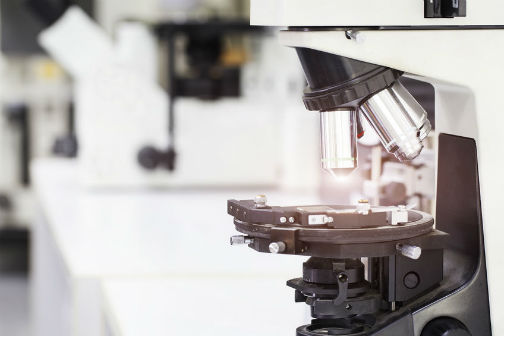New light-based technology reveals how cells communicate in human disease
Posted on 10 December 2018

An oscillating light on a sensor helps scientists see individual cells under a microscope and how they behave
All cells in the human body communicate with each other by releasing signalling molecules; this helps to ensure that tissues function normally, that the immune system is able to respond to infection, and that cell division and survival are regulated to prevent cells mutating, such as in cancer.
The new technique uses a sensor device that makes a light go back and forth on the surface of the sensor; the oscillating light helps detect and quantify the secretion of signalling molecules from individual cells to see how the cell’s behaviour changes over time.
Millions of cells
Dr José Juan-Colás, from the University of York’s Department of Physics and Electronic Engineering, said: “Currently scientists have to look at thousands or even millions of cells in one mass to understand how they communicate, but in order to detect any malfunctions, experts have to be able to see what is going on at the individual cell level.
“This is what we set out to do using a light-based technology to get at what is happening in each cell simultaneously.”
Now that scientists can see critical changes at the individual cell level, it becomes easier to detect the onset of disease such as cancer, or the development of blood clots for example, where early detection is necessary to improve survival rates.
Mutations
Professor Ian Hitchcock, from the University of York’s Department Biology, said: “Many diseases start with a mutation in a single cell, but existing tests are limited at being able to drill down to this level.
“By investigating these mutations in a single cell, using this new technique, we can start to look at answering important questions as to how changes at the single cell level lead to disease in an entire tissue; and, critically, what we can do to prevent it.”
The new technique can already be used on live human cells and the team are now working on developing the technology further towards clinical applications.
Step-closer
Professor Thomas Krauss, from the University of York’s Department of Physics, said: “We are now a step-closer to understanding how cells and their signalling molecules work to regulate human disease.
“The long-term aim is to develop this technique for use in clinical settings to diagnose disease earlier and potentially to help drug development companies avoid unnecessary adverse drug reactions.”
Explore more news

Researchers use robotics to find potential new antibiotic among hundreds of metal complexes
Tuesday 23 December 2025

Text messages could be key to helping TB patients quit smoking, according to study
Monday 22 December 2025

Teenage niece may have shaped Jane Austen’s Persuasion, new study suggests
Monday 22 December 2025

Project to examine how AI is changing the way science is done
Wednesday 17 December 2025

Researcher leads global push to cut tobacco harms in people with mental ill health
Monday 15 December 2025
Media enquiries
About this research
The research, supported by the UK Medical Research Council (MRC) and the Engineering and Physical Sciences Research council (EPSRC), is published in the Proceedings of the National Academy of Sciences (PNAS).
Explore our research here.
